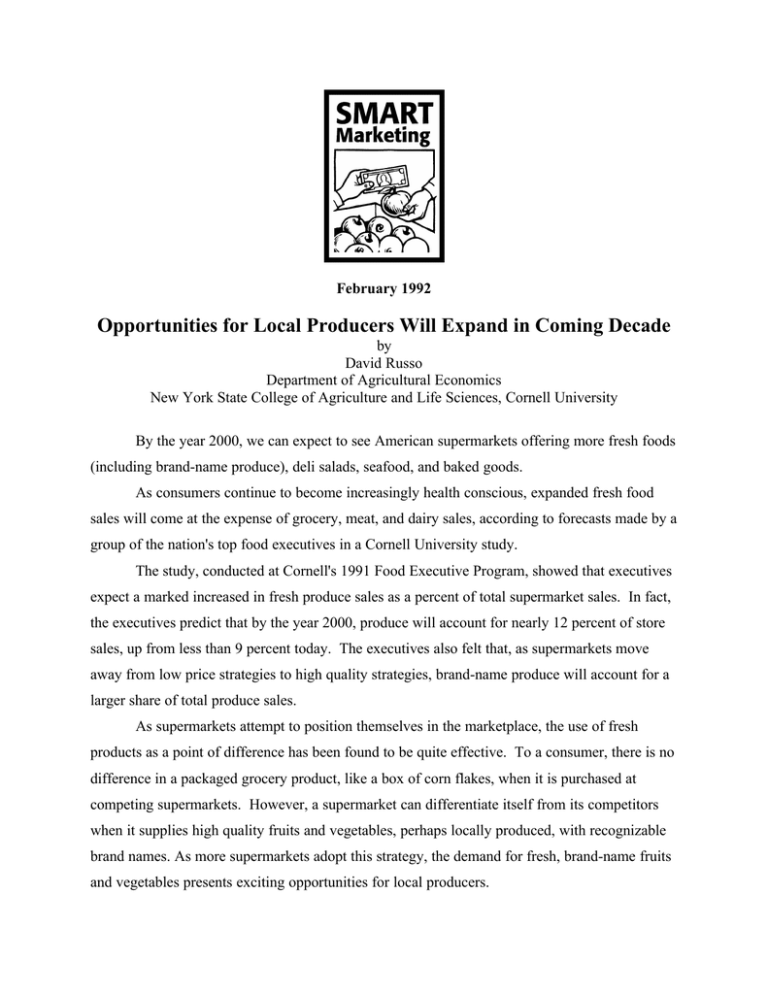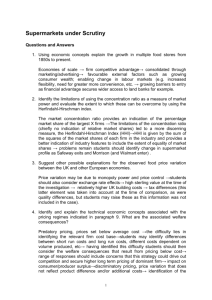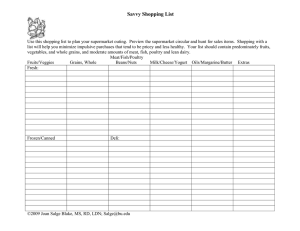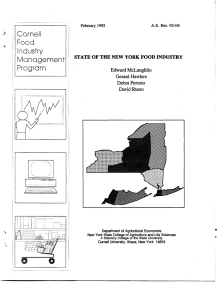Opportunities for Local Producers Will Expand in Coming Decade
advertisement

February 1992 Opportunities for Local Producers Will Expand in Coming Decade by David Russo Department of Agricultural Economics New York State College of Agriculture and Life Sciences, Cornell University By the year 2000, we can expect to see American supermarkets offering more fresh foods (including brand-name produce), deli salads, seafood, and baked goods. As consumers continue to become increasingly health conscious, expanded fresh food sales will come at the expense of grocery, meat, and dairy sales, according to forecasts made by a group of the nation's top food executives in a Cornell University study. The study, conducted at Cornell's 1991 Food Executive Program, showed that executives expect a marked increased in fresh produce sales as a percent of total supermarket sales. In fact, the executives predict that by the year 2000, produce will account for nearly 12 percent of store sales, up from less than 9 percent today. The executives also felt that, as supermarkets move away from low price strategies to high quality strategies, brand-name produce will account for a larger share of total produce sales. As supermarkets attempt to position themselves in the marketplace, the use of fresh products as a point of difference has been found to be quite effective. To a consumer, there is no difference in a packaged grocery product, like a box of corn flakes, when it is purchased at competing supermarkets. However, a supermarket can differentiate itself from its competitors when it supplies high quality fruits and vegetables, perhaps locally produced, with recognizable brand names. As more supermarkets adopt this strategy, the demand for fresh, brand-name fruits and vegetables presents exciting opportunities for local producers. Today it is often possible for groups of growers to provide local supermarkets with fresh, locally-grown produce. The local grower's name on the product is likely to suggest to supermarket customers that they are getting the freshest local produce available. Moreover, many consumers prefer to buy local produce as a way of supporting the economy of their community. The executives also predict that, as a result of health and other concerns, meat sales will shrink to 13 percent of supermarket sales, compared to its high of 24 percent in 1967. Dairy sales are also expected to fall from 11 percent of sales in 1967 to 7.5 percent of sales in 2000. There are, however, ways that New York State producers of meat and dairy products can reverse these trends. One area of major concern to today's consumers is the amount of fat in their diets. Historically, meat and dairy products have made up a large percentage of this fat. Producers of meat and dairy products must assist their trade organizations and processors in developing and marketing new, healthy ways of presenting these products. Low-fat milk and lean ground beef are two good examples, but much more work needs to be done. Consumers will only continue to be interested in meat and dairy products if they are prepared in ways that are consistent with consumers' new demands. Other trends that the executives predict we will see by the year 2000: - The average size of supermarkets is predicted to increase 61 percent, from 31,000 square feet today, to 50,000 square feet. - Dry groceries, such as canned and packaged products, will comprise only about 24 percent of supermarket sales in 2000, a fall of about 30 percent from 1967. - Take-out food sales are expected to triple, accounting for 15 percent of supermarket sales in 2000. - The food industry executives predicted that frequent-shopper programs will routinely track purchase patterns and demographic data on consumers and allow supermarkets to micro-market to specific customer segments. All in all, the food industry of the future will be different from the one we know today. Changing consumer lifestyles, health concerns, and the application of technology are leading the way to the year 2000.







